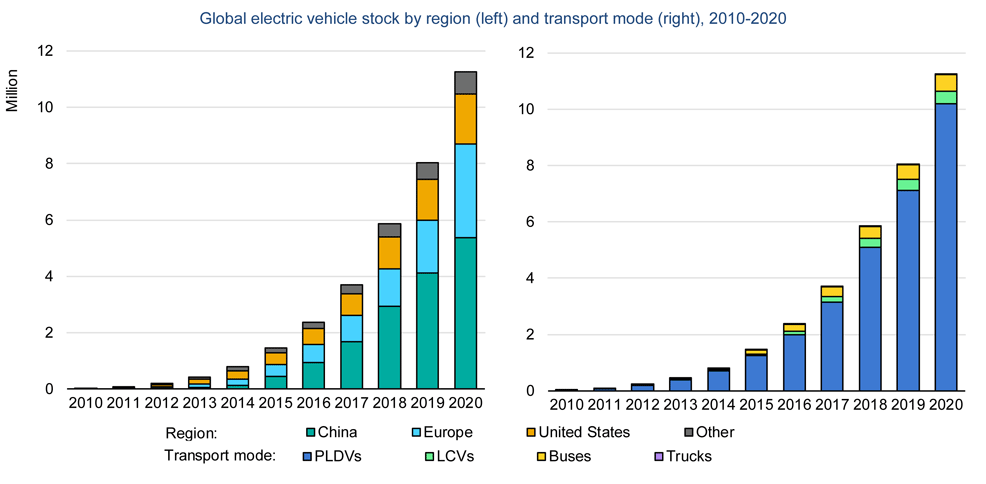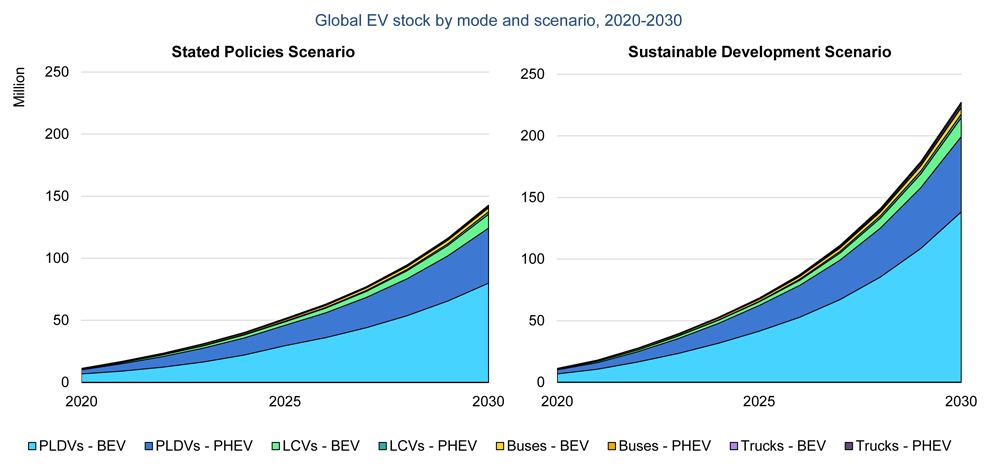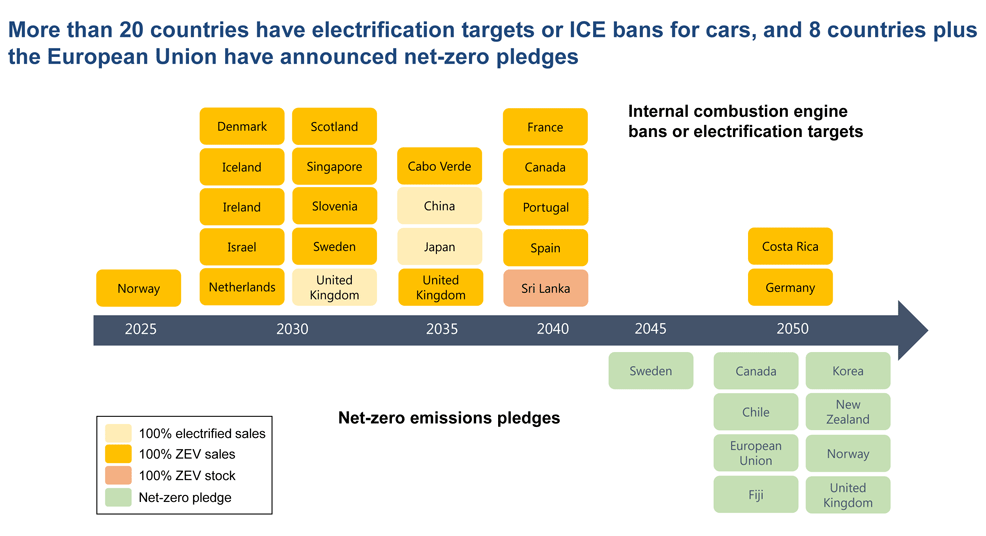
29th April 2021 Electric vehicles could number 230 million worldwide by 2030 The International Energy Agency (IEA) has today released its Global Electric Vehicle Outlook 2021. The report shows that, despite the pandemic, growth in electric vehicle sales has remained strong and will likely continue to boom in the coming decade.
The global auto industry suffered a punishing year in 2020 due to the major shock of COVID-19. However, the electric car market bucked the wider trend with growth of over 40% and is on track for a decade of strong expansion, according to a new report published today by the International Energy Agency. The IEA's Global Electric Vehicle Outlook 2021 finds that despite the economic turmoil, a record 3 million new electric cars were registered in 2020, a 41% increase from the previous year. By comparison, the global automobile market contracted by 16% during 2020. Electric cars' strong momentum has continued into this year, with sales in the first quarter of 2021 reaching nearly two and a half times their level in the same period a year earlier. Last year's increase brought the number of electric cars on the world's roads to more than 10 million, with another roughly 1 million electric vans, heavy trucks and buses. For the first time last year, Europe overtook China as the centre of the global electric car market. Electric car registrations in Europe more than doubled to 1.4 million, while in China they increased 9% to 1.2 million. "While they can't do the job alone, electric vehicles have an indispensable role to play in reaching net-zero emissions worldwide,'' said Fatih Birol, Executive Director of the IEA. "Current sales trends are very encouraging, but our shared climate and energy goals call for even faster market uptake. Governments should now be doing the essential groundwork to accelerate the adoption of electric vehicles, using economic recovery packages to invest in battery manufacturing and the development of widespread and reliable charging infrastructure.'' Electric vehicles are set for major growth over the coming decade, the new IEA report finds. Based on current trends and policies, it projects the number of electric cars, vans, heavy trucks and buses on the road worldwide to reach 145 million by 2030. But if governments accelerate efforts to reach international climate and energy goals, as outlined in the IEA's Sustainable Development Scenario, the global fleet could potentially reach 230 million by 2030. This would be a nearly 20-fold increase in the number of electric vehicles on the roads compared to last year.
Consumer spending on electric cars increased by 50% last year to reach $120 billion. At the same time, government support measures stood at approximately $14 billion – the fifth year in a row that they have fallen as a share of total spending. Even if government subsidies remain important for spurring the uptake of electric vehicles, this suggests sales are increasingly being driven more by consumer choice. Automakers offered 370 electric car models in 2020, a 40% year-on-year increase. Eighteen of the 20 largest automakers have announced intentions to further increase the number of available models and boost production of electric light-duty vehicles. These automakers account for 90% of all global sales. The report notes that governments helped buffer electric cars from 2020's downturn by extending existing policy and fiscal support, and augmented them with stimulus measures in response to the COVID-19 crisis. Many countries also promoted the competitive position of electric vehicles by strengthening fuel economy and emissions standards, and redoubled their support for developing battery technology and deploying charging station infrastructure. The shift towards electric vehicles extends well beyond cars. The most electrified road transport mode today is two- and three-wheeled vehicles – such as motorcycles and mopeds – with more than 25 million units sold, the bulk of them in Asia. Buses have also electrified rapidly. Meanwhile, heavy trucks are a segment where electric models and sales have only recently begun to grow strongly, as battery performance and driving ranges have improved. Electric vehicles have a key role to play in tackling emissions. On a "well-to-wheel" basis, their net contribution to reducing emissions will grow in tandem with the pace at which electricity generation decarbonises. This highlights the need for policy makers to think about clean energy transitions holistically across sectors to ensure that progress in one area is not being undermined by shortcomings in another, the IEA report explains. Looking beyond 2030 and towards the longer-term future, the global electric vehicle fleet could grow even bigger if governments around the world pursue the ambitious goal of reaching net-zero emissions by 2050. More details on the implications of this pathway for electric vehicles and the broader transport sector will appear in the IEA's special report, Net Zero in 2050: A roadmap for the global energy system, to be published on 18th May.
ZEV = Zero-Emission Vehicle
Comments »
If you enjoyed this article, please consider sharing it:
|









